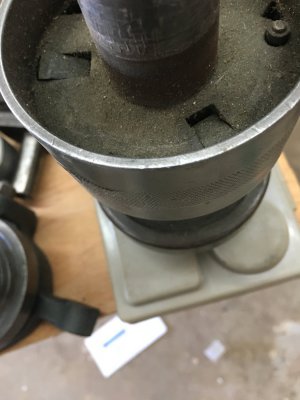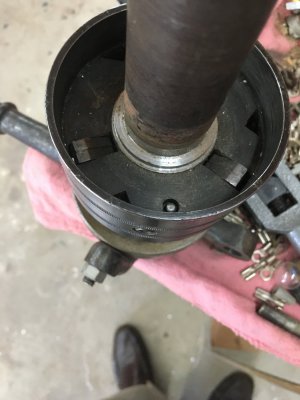This is a follow on post to a previous post on 5C collet slipping; there may be some duplication, I apologize for that. I would like to focus on the closer mechanism itself. Below is a photo showing the closer in the 'closed' position. My questions are:
First is the mechanism adjusted properly? Are the finger positions approxamately correct?
Second is there an adjustment to increase the 'pull'.
Thanks, Dan

First is the mechanism adjusted properly? Are the finger positions approxamately correct?
Second is there an adjustment to increase the 'pull'.
Thanks, Dan



